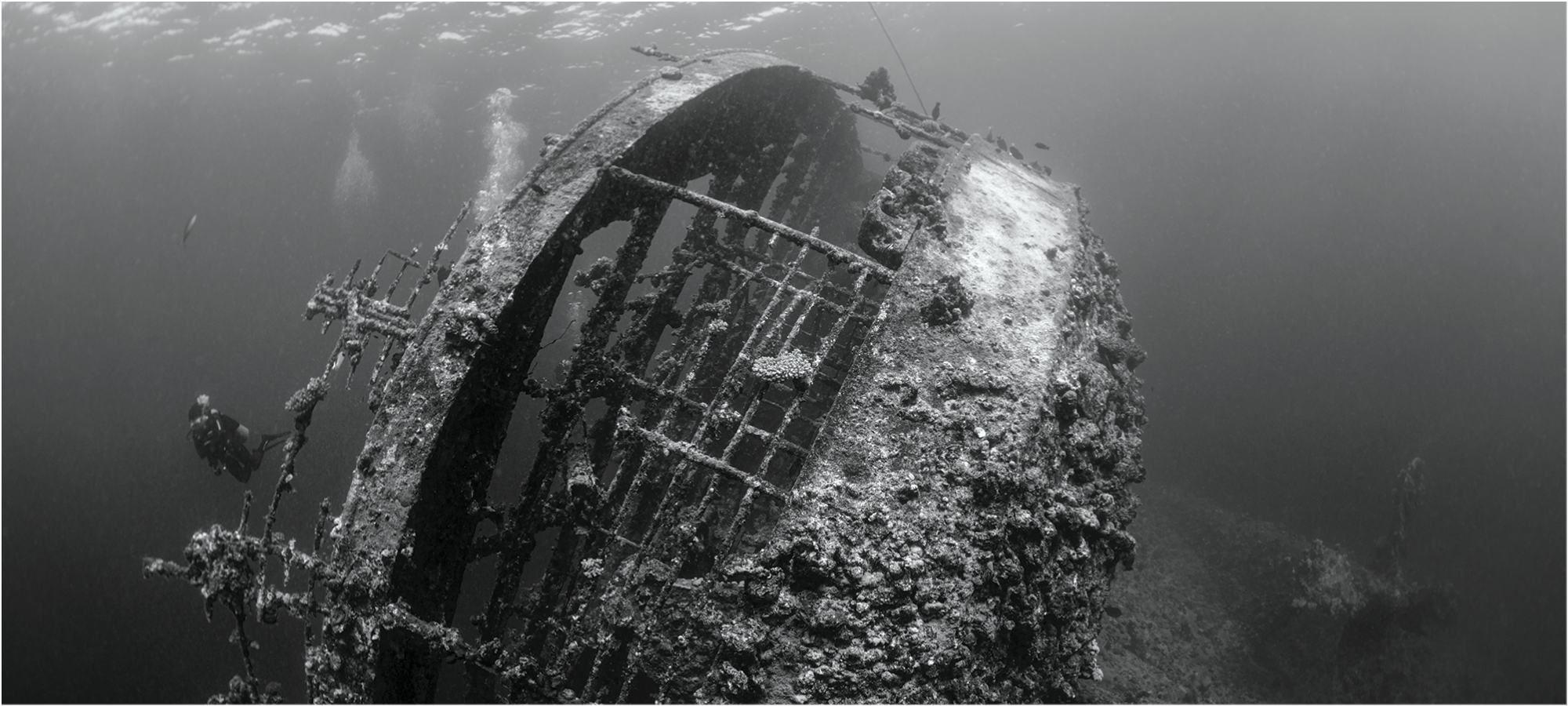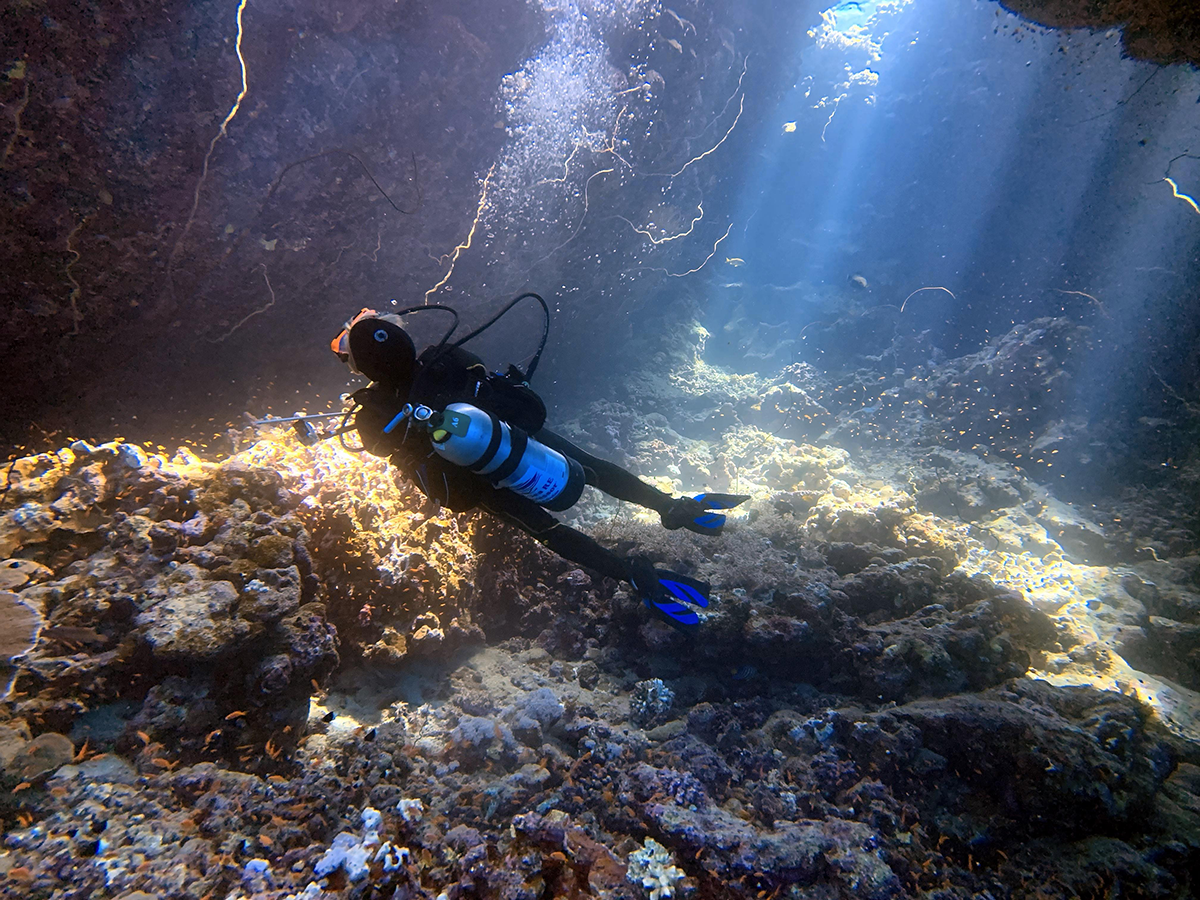The Hidden Wonders of Wreck Diving in Sudan's Central Red Sea
Mention wreck diving in the Red Sea, and divers will inundate you with the wonders of the north. Indeed, the Thistlegorm in the Strait of Gubal boasts an impressive wartime cargo of trucks, motorbikes and rifles entombed within its 415-foot-long hull. And you can’t overlook the collection aground on Sha’ab Abu Nuhas reef: Giannis D, Carnatic, Chrisoula K, Kimon M.
But cast your eyes south of these well-worn waters and you’ll find an under-the-radar wreck hub that delivers World War II thrills and an underwater village built by Cousteau himself.
“It’s great diving. There’s schools of hammerheads and oceanic mantas down there,” says Wayne Brown, CEO of Aggressor Adventures. “There’s hardly any boats. ...When you go to the northern Red Sea, there’s going to be 10 boats on a site. With Sudan, you’re probably going to be the only one there.”
Welcome to the central Red Sea.
Subversion Submersion
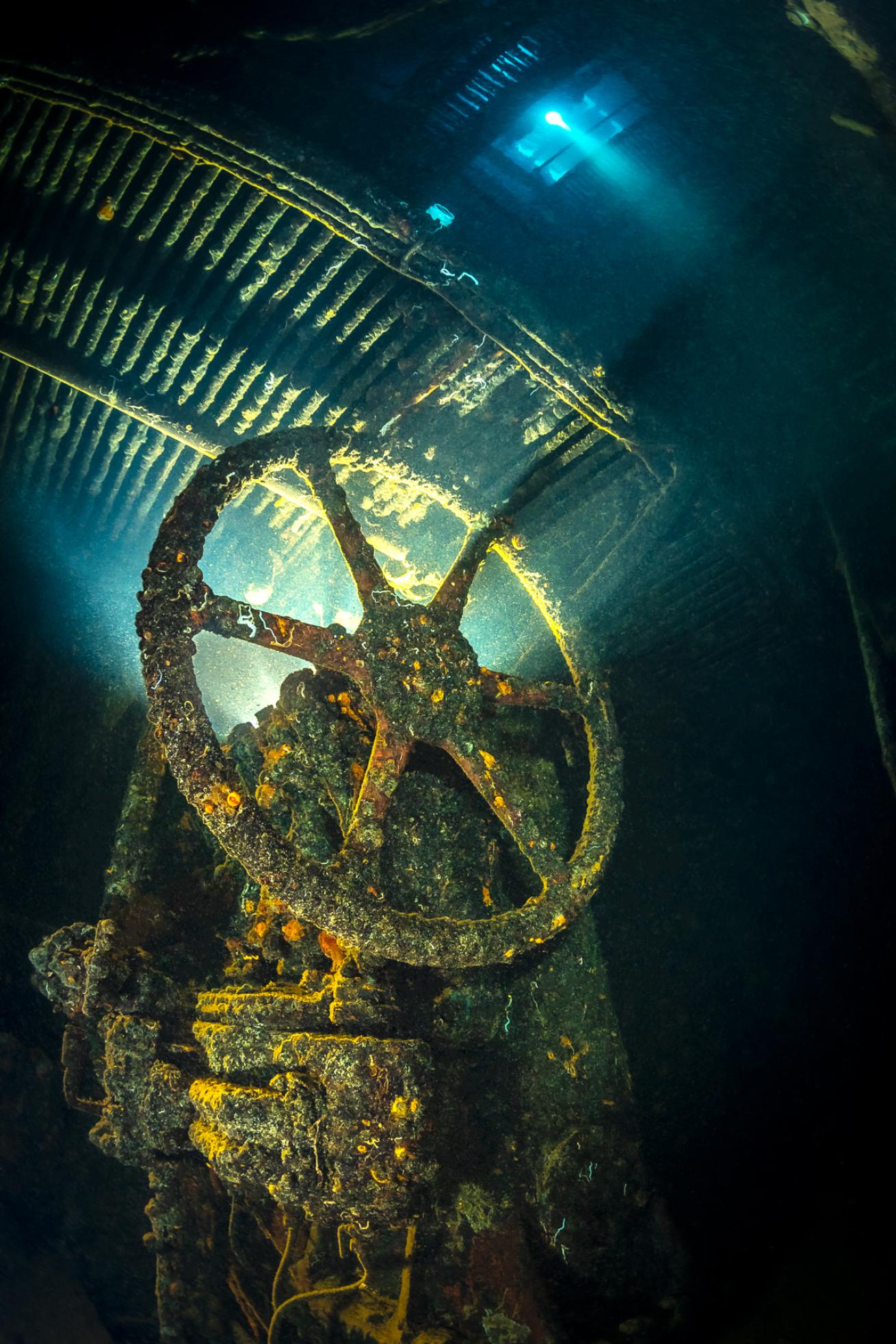
Tobias FriedrichThe stern of the Umbria shipwreck.
The SS Umbria churns to a stop outside Port Sudan, two British ships nipping aggressively at its stern. Only two days before, the Brits had let the Umbria through at Egypt’s Port Said, but now Her Majesty’s Navy is herding Mussolini’s sailors out of the open ocean. It’s June 1940. The world expects Italy will be siding with Hitler any day, but it has yet to formally enter the fray. Together, the HMS Grimsby and HMS Leander have stopped the Umbria on the pretext of searching it for contraband, a major issue for Capt. Lorenzo Muiesan, given that his cargo ship does, in fact, have scores of explosives stashed below deck to the tune of 6,000 tons of bombs, 600 cases of detonators, and 100 tons of other weapons.
Then Muiesan’s radio crackles with the news: Italy has just joined Hitler in the war. The Brits are now enemy forces. He cannot allow them to seize his explosive cargo. His solution? Pretend to lead his crew in a muster drill. In reality, they’re scuttling the ship.
Down, down, down it goes, taking its weapons to the depths of Wingate Reef. They are no longer explosive, “but you should not play with them,” advises Sven, our German divemaster, back in present day.
My dive group fins toward Muiesan’s wreckage through the hazy afternoon waters. The anchor line stretched from the ship promises the wreck is nearby, and I strain my eyes as we move forward.
An unbelievably large blade looms into view. It alone dwarfs me. One blade becomes two, then four as a hulking propeller emerges in the distance. It dawns on me that it must have taken some serious horsepower to move the more than 500-foot-long Umbria. Its ample tonnage lies in the sand before us, proudly splayed in one piece on its port side.
Swimming past the propeller, we loop back around toward the ship’s exposed bottom. I descend down a wall coated in giant clams that purse their purple lips in disapproval whenever I get too close. At last, I reach my max depth: 125 feet. Here, an arch blasts through the wreck. Gnarled knots of wire, metal innards spouting out the end, lay forlorn on the other side. I look up into an eerie teal sky dominated by a monstrous exposed skeleton.
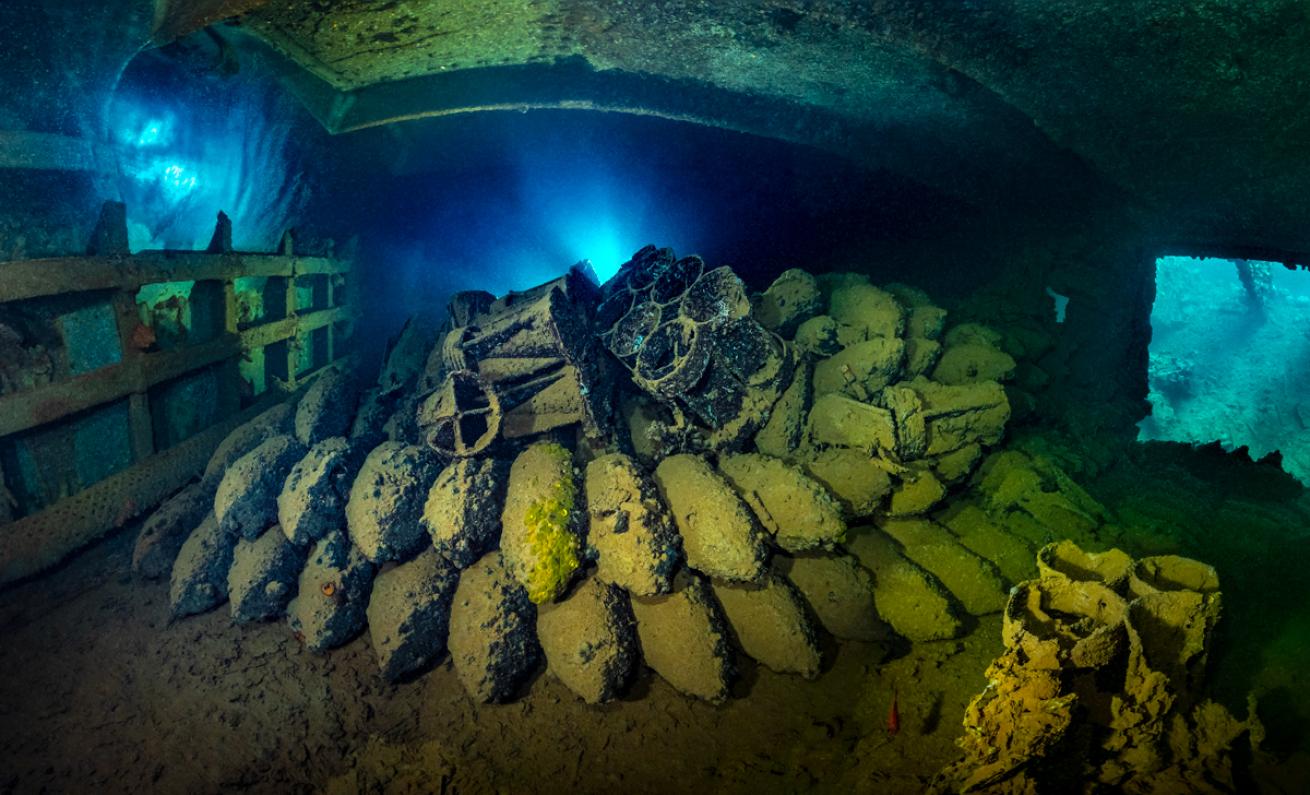
Tobias FriedrichA cargo of contraband weaponry and Italian automobiles lies undisturbed within the sunken confines of the Umbria.
My heart kicks up a notch as we begin to explore the Umbria’s numerous nooks and curious crannies. There are so many places to visit on this one wreck that it will take two dives to skim the highlights, and there is more than enough to fill our three dives here before we sail farther south.
We float up to an exposed hallway, swept on by a school of fusiliers and waving meadows of white pulse soft coral feeding on the current. The hallway’s external wall and ceiling have all but disappeared, and its extreme tilt places interior doors almost straight above our heads.
“Everyone tries to dive that hallway like they’re walking it,” Matt, another divemaster on this Aggressor liveaboard, told us during the briefing. The hall is so slanted to port that moving through it with your head toward the ceiling requires yanking your whole body at a 45-degree angle to the left. I try to tilt myself straight, laughing into the regulator as my weight pockets yank me back into line. The group pauses to appreciate the porcelain tub on our right, known as the Captain’s Bath, visible through a collapsed internal wall.
“What’s amazing is it’s still full of water, even after all this time, Matt deadpans when we’re topside.
The Umbria’s illicit cargo litters the wreck as we make our way toward the bow. On the first dive, Matt turns around to mime driving a car. I swing my flashlight to the left as we penetrate the wreck, and the beam illuminates three rusted Fiats stacked like slices of bagged bread. And, just when I think this wreck cannot get any more Italian, we soar over an absolute bacchanal of wine bottles.
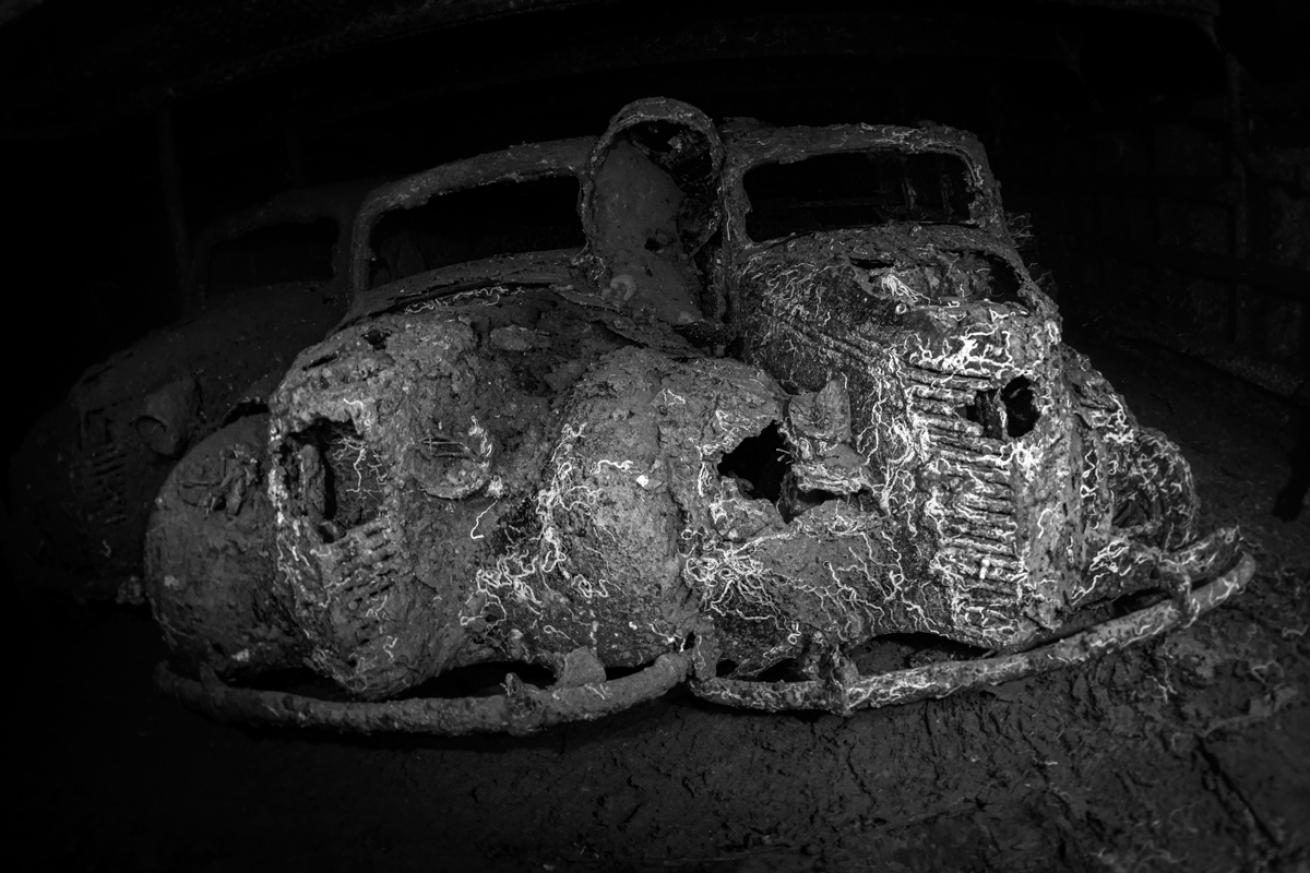
Felipe Barrio/UF-Photo.comTwo cars sit as a part of the underwater landscape in Sudan.
Parrotfish, angelfish and an eel line the path to the highlight of our third and final dive: the engine room. When we enter through the ceiling, I find it hard to believe so large a space could be enclosed on a ship. We are floating in the formerly massive airspace above a sprawling, multistory staircase descending into a black unknown. Swinging flashlights illuminate a gaping room to our right. It passes by slowly as we drift to the imposing steel stairs. Looping down a level does not reveal what hides in the inky depths.
I follow Matt skyward, and we hook a right. Squeezing through a small door, I look down upon two squat boilers. Then it’s up and out, back into the teal, buzzing above the wreck like a drone to take in its full majesty.
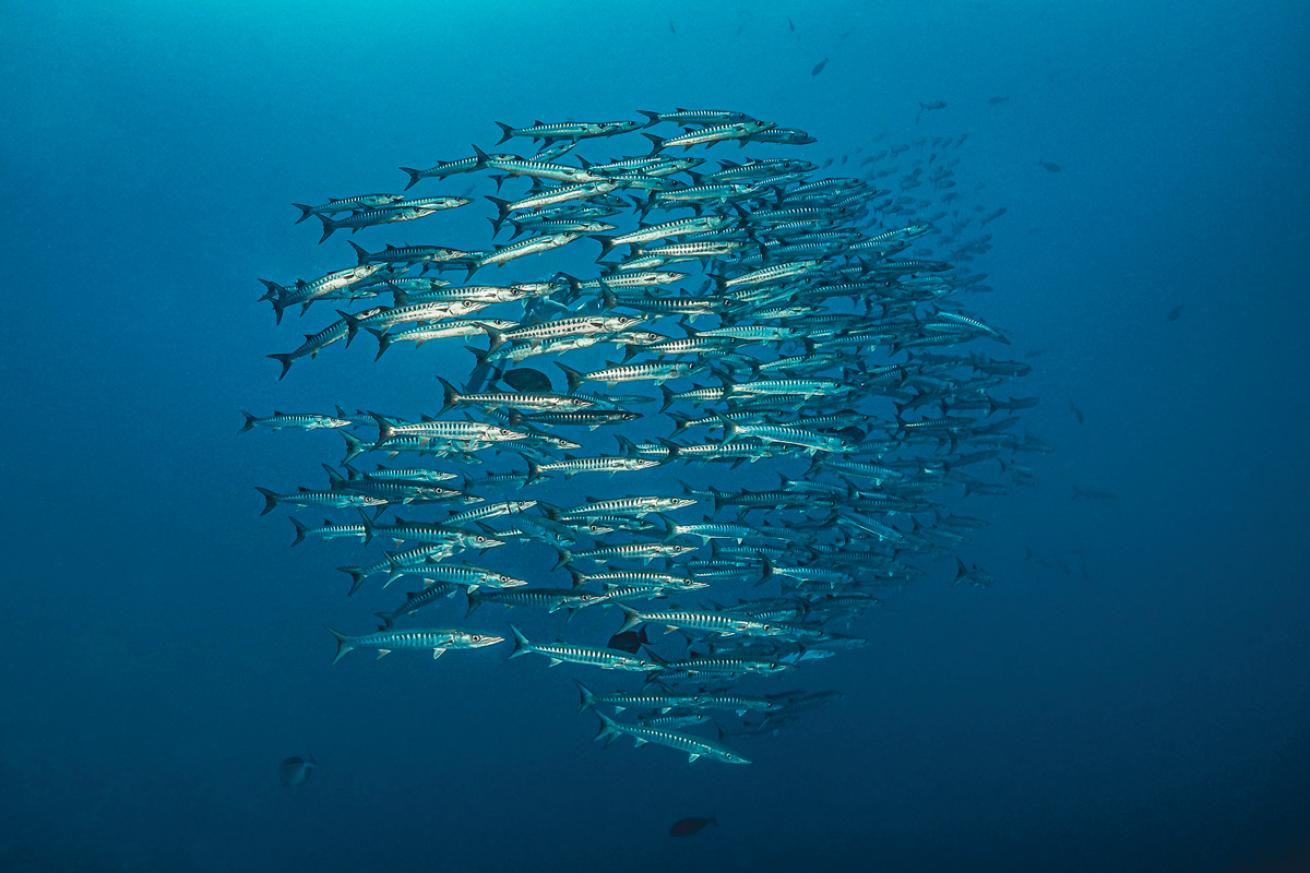
Tobias FriedrichA school of barracuda off the shores of Sudan.
The Ghost of Cousteau
I watch men in tight shorts knock back shots as they smoke fully stuffed pipes. Sardined into their compressed headquarters, they constantly reach out to tap each other on the back just to navigate from one side of the room to the other. Classical music floats through the small space as tobacco smoke filters to the ceiling. It has nowhere else to go—these men are 30 feet underwater.
“This is the headquarters of Conshelf Station Two,” comes Jacques Cousteau’s voice from my liveaboard’s TV screen, narrating his 1964 Oscar-winning documentary World Without Sun. “It is a cozy five-room lodge, our village on the seafloor.”
Cozy is a generous word for the cramped space on the screen.
This village, better known as Conshelf II, was the second of three underwater habitats Cousteau built for humans to live in, allowing scientists to spend hours a day conducting research dives without surfacing or worrying about the bends. Five aquanauts lived in what was called the “Starfish” house for a month on supplies continually delivered from the nearby Calypso. At the time, this was the longest period anyone had lived underwater; Cousteau’s initial Conshelf I expedition lasted a week. This second settlement was rounded out with a submarine known as the diving saucer—used for deep-sea exploration—along with its garage and a storage hut for air tanks.
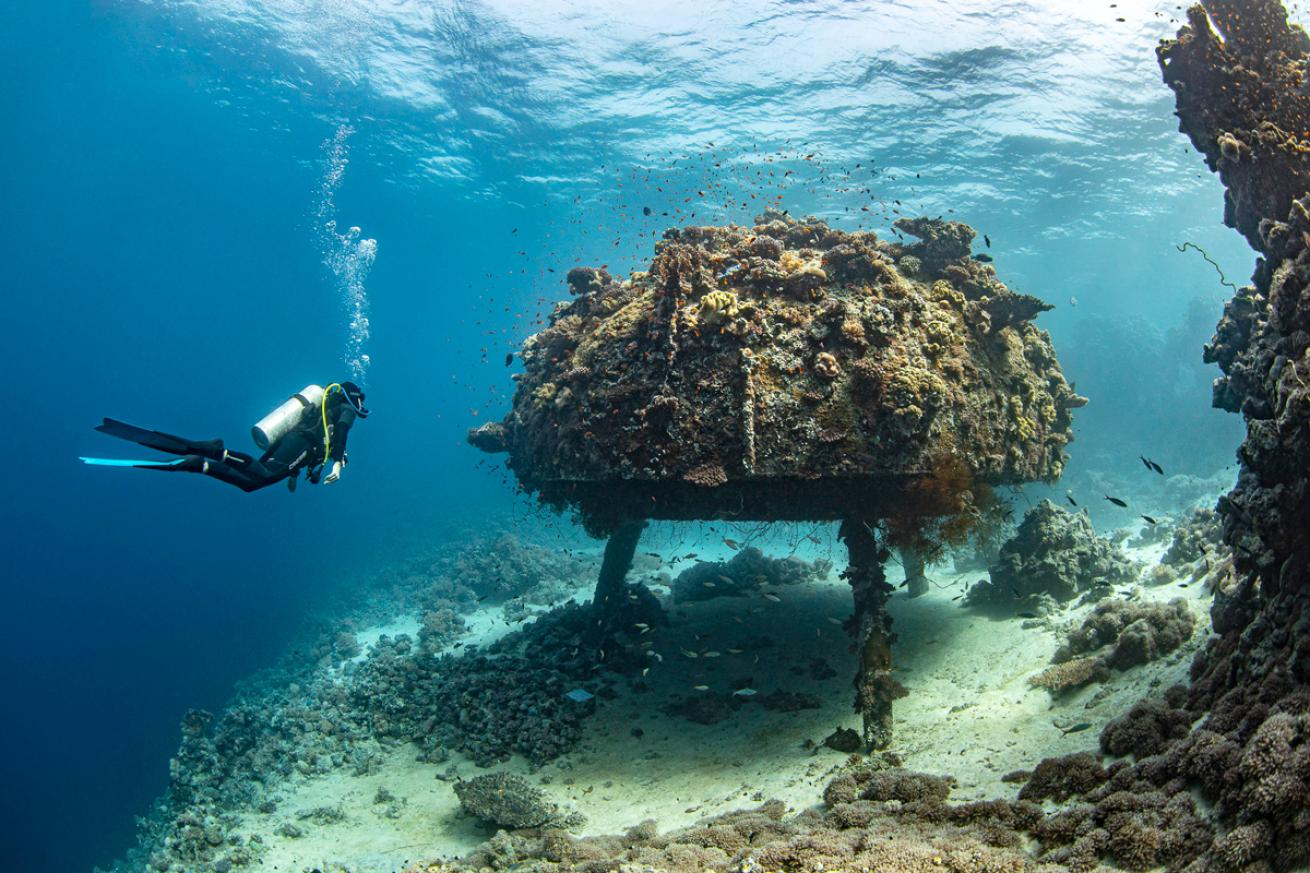
Tobias FriedrichThe squat, mushroomlike garage of Jacques Cousteau’s underwater habitat Conshelf II has an air pocket beneath its domed structure that can be explored by divers.
At 90 feet, off a shelf at the edge of the reef, a smaller enclosure allowed two of the researchers to spend a week breathing a custom gas mix to test if people could survive at that depth. Their successful experiment laid the groundwork for today’s saturation divers. Initially, the point of the whole project, partially funded by the French petrochemical industry, was to pave the way for underwater exploitation settlements. “If they succeed, it will be possible to systemically exploit the resources of the sea,” Cousteau says in World Without Sun.
It would still be several years and one more Conshelf before he shifted to avid environmentalism, a tradition his family keeps alive today—Fabien Cousteau, his grandson, is working to build Proteus, an “international space station underwater,” in Curaçao for today’s scientists.
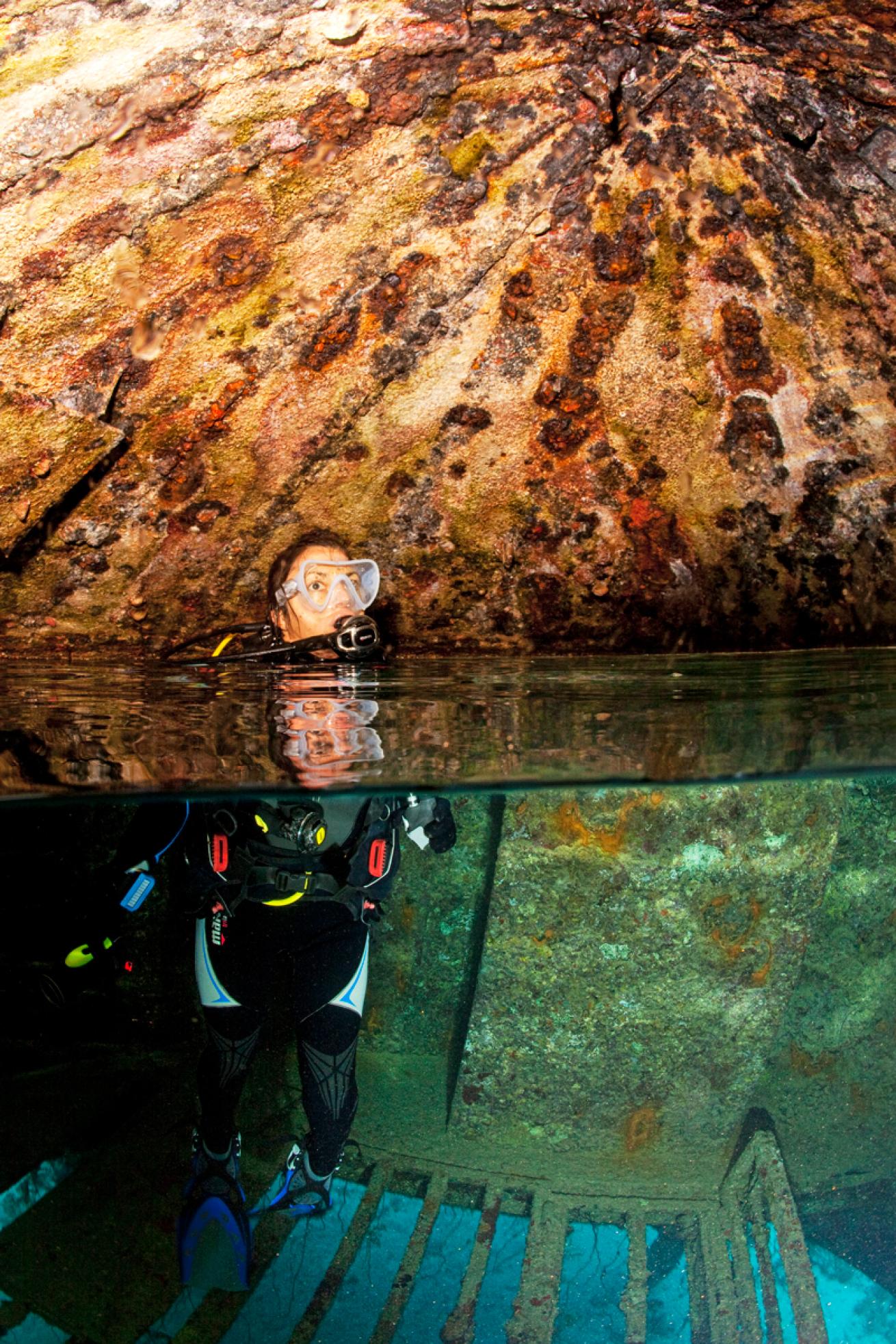
Franco BanfiThe top of the dome houses an air pocket divers can stick their heads in (though they should not breathe the air).
As I back-roll from the Zodiac and into this site of groundbreaking science, the first thing I see is a large mushroom. Or, what appears to be a mushroom but is in fact a large metal bubble propped up on three legs. It’s the diving saucer’s garage, I realize. The stiff shell, cleaned once a week by Calypso divers when Conshelf II was active, is now coated in algae and small corals. Minute fish flit around the dome, which is punctured at regular intervals with porthole skylights.
I skim underneath the garage and look up through the bars along the bottom. Other divers have beat me inside, their two sets of fins crowding the small interior. I marvel that a small sub and its crew fit in this small space. That sensation intensifies once I am inside—I feel my movement is constricted in here, and right now it’s just me and the fish. Of course, the crew did not have to deal with dive equipment to move around this space. When it was in use, the inside of the garage was full of compressed air. A winch pulled the submarine out of the water and into the dry dome, which allowed for maintenance. A scuba kit was donned before dropping out of the garage to retire to the Starfish.
Surprisingly, the dome is not entirely full of water. A small pocket of air is preserved at the very top. I stick my head into the empty space, feeling like Will Turner walking with a dry head on the seafloor underneath the sunken canoe in Pirates of the Caribbean. Still breathing through my regulator (who knows what gases have accumulated here), the noise of fish and other divers’ bubbles is shockingly loud.
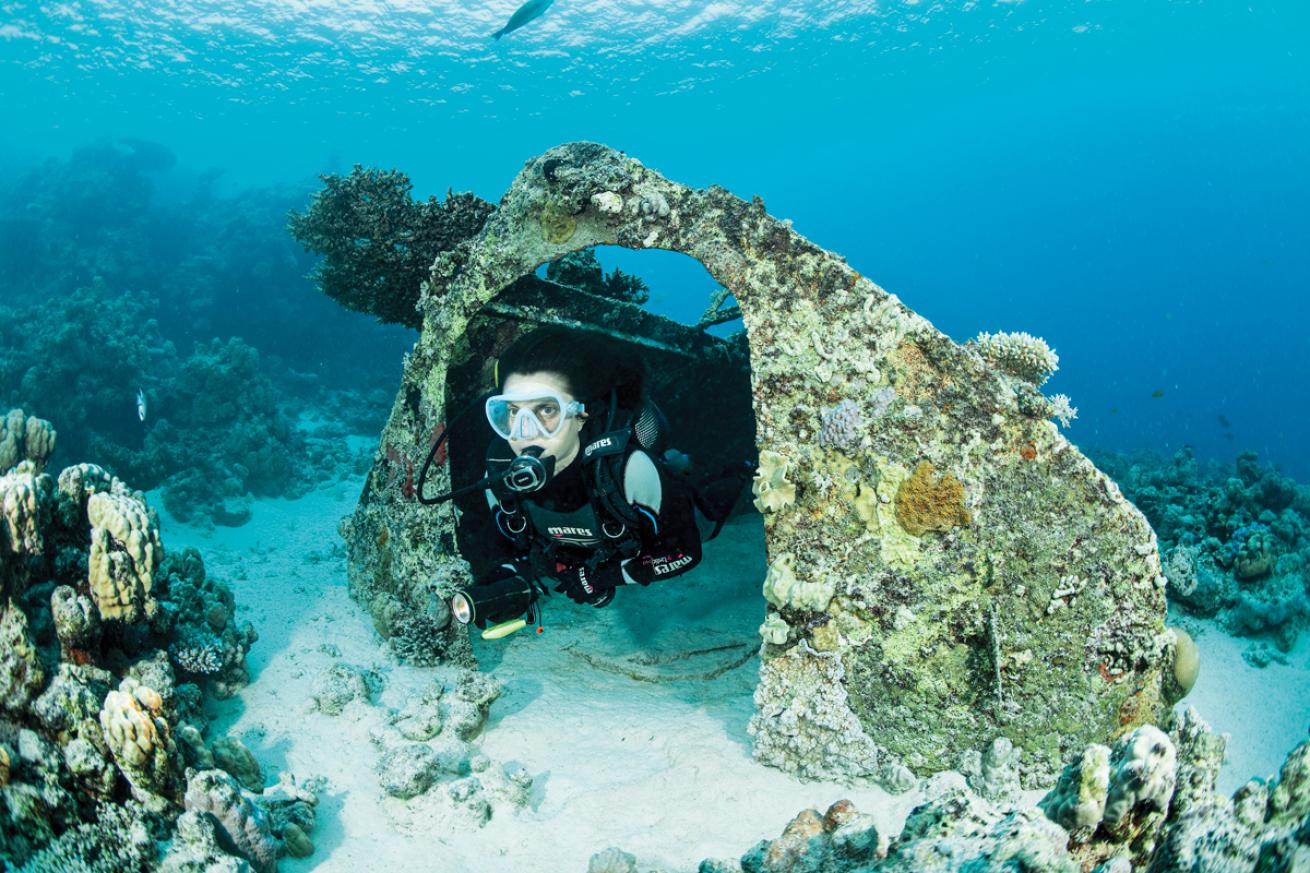
Franco BanfiA diver swims through remains of Jacques Cousteau’s Red Sea habitat.
I drop back down and out of the garage and over to the nearby tank storage. Two triangles with small arched doors are connected by long rectangular walls, creating a home for the compressed air used to explore the reef. There’s no roof, but I entertain myself by swimming in one door and out the other before soaring off to see the reef Cousteau’s men called home.
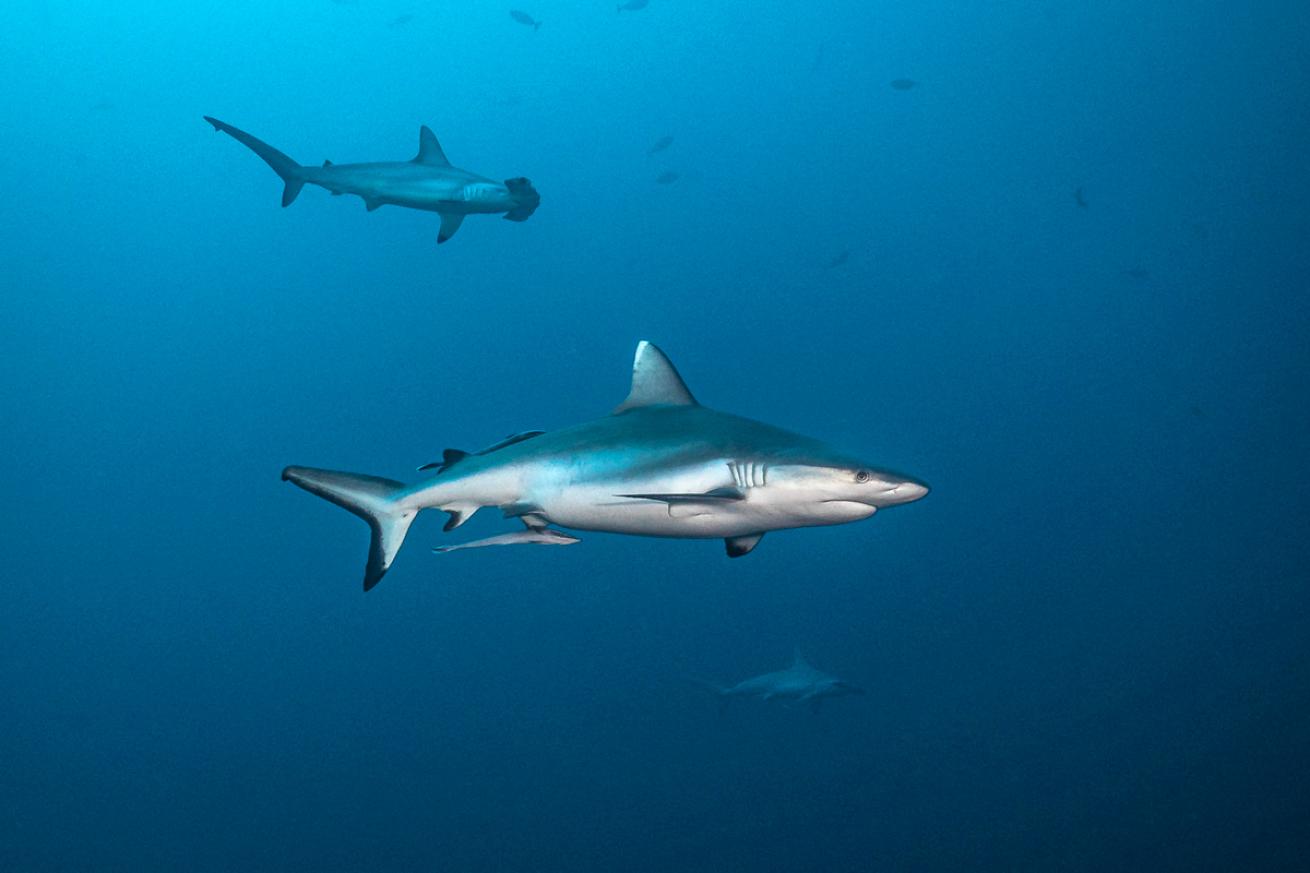
Tobias FriedrichA gray reef shark and a hammerhead cruise in open water.
I find an unidentifiable-to-me hunk of metal, thoroughly converted into an artificial reef. It is near the edge of the site, the cliff over which Cousteau sailed in his diving saucer and men proved humans could survive 90 feet below the ocean’s surface. There are some scraps left from the deep habitat, but I can’t tear myself away from this beautiful reef to hunt them down. I’m only 25 feet deep, and the strong sun is filtering all around. I watch an oversize parrotfish kick up sand, keen on devouring something unseen. An electric ray soars regally through in open water before burying himself in the sand, completely disappearing from view. Two clownfish huddle in front of their chosen anemone, and as I hover, their baby emerges to watch the world go by. Buried in a notch, a beaming blenny smiles at me like a tiny sunbeam.
I zip back and forth between the tall reef structures arching skyward, reveling in the beauty around me. I too would volunteer to spend a month underwater if it meant I got to dive this reef every day.
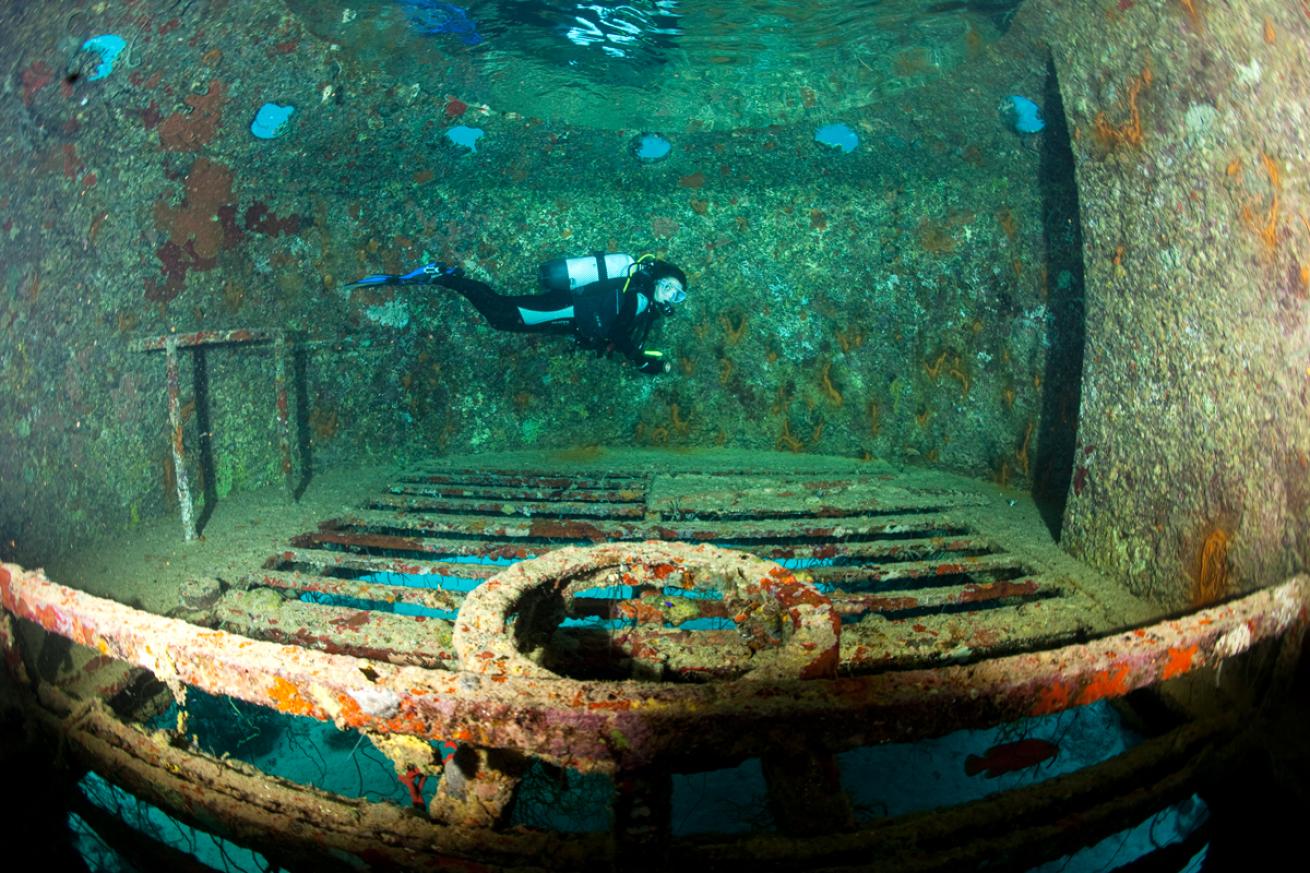
Franco BanfiInside Conshelf II’s submarine garage.
Need To Know
Operator Aggressor Adventures. This trip was done in March 2022. Aggressor’s Sudan operations are paused until further notice, but its fleet continues to sail in 17 countries.
Conditions Water temps in this region are in the mid-to-high 70s during winter, peaking in the mid-80s in summer. Visibility can range from 30 to greater than 100 feet depending on weather and water conditions.
When to Visit The central Red Sea’s conditions are best from March to May or September to November, though it is divable year-round.
What to Wear A 5 mm wetsuit with a hood, boots and gloves is recommended.
Getting There Liveaboards diving Sudan typically sail from an Egyptian port, clearing customs at Port Sudan before diving within Sudanese waters begins.
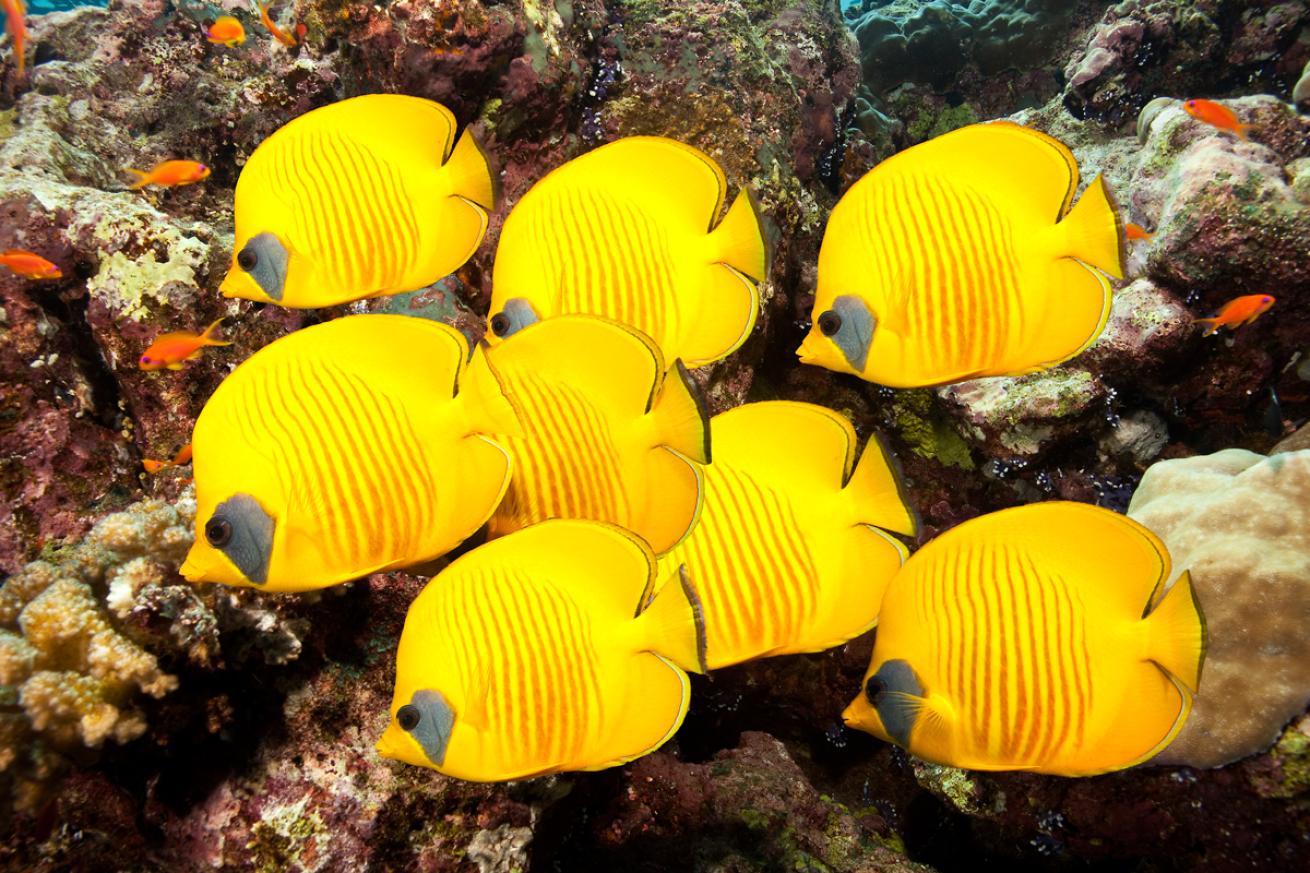
Franco BanfiMasked butterflyfish on the reef.
Entry Requirements At the time of this trip, U.S. travelers entering Egypt need a negative COVID PCR test within 72 hours before departure, or within 24 hours of arrival for rapid antigen tests. Test results must include a QR code. Sudanese officials will board the vessel to take another COVID test for their records when the vessel goes through customs.
Fees Sudanese port fees must be paid in U.S. dollars, so discuss with your boat if and how much money you’ll need to bring aboard to give to the crew upon boarding. At the time of this sailing, marine park fees, a fuel surcharge and visas came to $1,040, which was in addition to the listed trip cost.
Experience Requirement The Sudanese government requires divers to have logged 50 dives before diving in the country.
Recommended Certifications A PADI Advanced Open Water Diver certification is a good idea as currents in this region can be strong and some points of interest, such as wrecks and schools of hammerheads, can be deep. A Wreck Diver certification is required to penetrate wrecks so you can explore beyond the superstructure.

